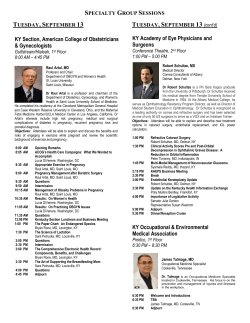
Why conodonts are not vertebrates ?
Why conodonts are not vertebrates ? The term vertebrate is generally viewed by systematists in two contexts, either as Craniata (myxinoids or hagfishes + vertebrates s.s., i.e. basically, animals possessing a stiff backbone) or as Vertebrata (lampreys + other vertebrae-bearing animals, which we proposed to call Euvertebrata). Craniates are characterized by a skull; vertebrates by vertebrae (arcualia); euvertebrates are vertebrates with hard phosphatised tissues in the skeleton. The earliest known possible craniate is Myllokunmingia (syn. Haikouichthys) from the Lower Cambrian of Chengjiang, south China. Euvertebrates appear in the Ordovician. C. H. Pander is sometimes thought to have been the first to propose that conodonts are vertebrates, but he did have doubts about the fish affinities of conodonts. This proposal was revived in the 30s and especially in the 80s of the 20th century and given elevated status in 2000 through a cladistic analysis based upon interpretation of conodont mineralized tissues as homologous to those of vertebrates. This analysis resolved conodonts within the clade Vertebrata s.s., and incorporated a ʻTotal Group Conceptʼ (TGC), including conodonts in the TG Gnathostomes (= jawed vertebrates). This resulted in the unusual scenario in which “teeth” appear before jaws. We reject the TGC nomenclature as applied to early vertebrates. In addition, based on all existing evidence, we consider that conodont hard tissues and several other anatomical structures in conodonts are not homologous with those of vertebrates. Making a revised cladistic analysis, eliminating characters unknown in fossils, conodonts appear stemward (i.e. more basal) to craniates and are thus interpreted as basal chordates at best. To help resolve the phylogenetic relationships of conodonts and chordates, the analysis should be extended to include non-chordate taxa. Schematic illustration of one of the topologies obtained in the phylogenetic (cladistic) analysis of chordates after Turner et al. (2010, modified). Some of the diagnosic features (synapomorphies) of the main taxa are as follows: Chordata- notochord; Craniata- skull; Vertebrata- arcualia (vertebrae); Euvertebrata- mineralized tissues of the skeleton (enamel or enameloid, dentine, bone); Gnathostomata- jaws; Eugnathostomata- teeth. Eugnathostomes include cartilaginous fishes (Chondrichthyes), fossil “spiny sharks” (Acanthodii), and bony fishes (Osteichthyes = Actinopterygii + Sarcopterygii). After Blieck et al. (2011, fig. 4). Cited references : BLIECK, A., TURNER, S., BURROW, C.J., SCHULTZE, H.-P., REXROAD, C.B., BULTYNCK, P. & NOWLAN, G.S. (2011).- Fossils, histology, and phylogeny: Why conodonts are not vertebrates.- Episodes, 33 (4) [2010] : 234-241, 4 fig. ; I. U. G. S. [also World Wide Web address : http://www.episodes.co.in/Contents/contents33-4.pdf]. TURNER, S., BURROW, C.J., SCHULTZE, H.-P., BLIECK, A., REIF, W.-E.†, REXROAD, C.B., BULTYNCK, P. & NOWLAN, G.S. (2010).False teeth : conodont-vertebrate phylogenetic relationships revisited.- Geodiversitas, 32 (4) : 545-594, 2 tabl., 6 fig., 4 append. ; Paris [also World Wide Web address : http://www.mnhn.fr/museum/front/medias/publication/31374_g2010n4a1.pdf].
© Copyright 2025














